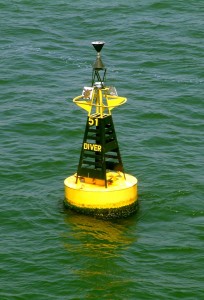Leadership challenge: demonstrating a buoyancy of spirit
Benjamin Franklin said, “The only things certain in life are death and taxes.”
I would add one more: Not everything will go as planned.
So how do we deal with life when it doesn’t go as planned? We need to be resilient.
 Harvard Business School professor, Bill George, recently wrote in the Huffington Post:
Harvard Business School professor, Bill George, recently wrote in the Huffington Post:
“As I wrote in my 2009 book, Seven Lessons for Leadership in Crisis, resilience is the combination of heartiness, toughness and buoyancy of spirit. These qualities are necessary for leaders to persevere through struggling moments, bounce back from adversity and adapt to external stress.”
His suggestion for “buoyancy of spirit” caught my attention. What a vivid explanation of what defines effective leadership while navigating the white water rapids of life – and business.
The value of buoyancy means irrepressibility; ability to float; cheerfulness that bubbles to the surface. Can’t you just picture a buoy floating out on the open waters, virtually unsinkable?
So, I went looking for a modern leader who has demonstrated this buoyancy of spirit. And I found one.
Can you guess the name of this buoyant leader?
- He grew up in his mother’s hometown of Lawrence, Kansas.
- The minister of his church was an important mentor and source of inspiration. He would sit at the front of the church and observe the minister’s influence over the congregation.
- At the age of 17, he was deeply motivated by president John F. Kennedy’s challenge to send a man to the moon.
- He graduated university with a Bachelor and Master of Science in aeronautical and astronautical engineering. He also received a Masters in Management from MIT Sloan School of Management.
- He went to work for Boeing immediately out of college, as an engineer.
- He made contributions to various Boeing projects, including: 727, 737, 747, 757, 767, and 777.
- Over his 37 years at Boeing, he rose through the executive ranks as VP, SVP, and then president and CEO of Boeing Commercial Airplanes.
- In 2006, Aviation Week & Space Technology named him as person of the year.
- It was widely expected he would become the CEO of The Boeing Company. But he was passed over.
- He left Boeing to become CEO of one of the world’s largest automakers, which was in serious financial trouble.
- Facing massive losses and declining market share, he implemented major cost-cutting initiatives, which led to the company’s first profitable quarter in two years.
- He suspended dividends to shareholders.
- He led a major effort to borrow $23.6 billion by mortgaging all of the company’s assets. At the time, this was viewed as an act of desperation. But he is now widely credited with stabilizing the company’s financial position.
- Due to his efforts, the company avoided bankruptcy and did not need to seek a government bailout.
- He presided over the sale of various assets (car brands), raising $2.3 Billion. Had he waited a year longer, many speculate no buyers would have been found.
- His prime focus was on (re)building the core company brand.
- During his tenure, he negotiated 4 new agreements with United Auto Workers, bringing down labor costs from $76/hour to $55/hour.
- He lives within 3 miles of his office, and arrives at 5:15 am every morning, working 12-hour days.
- He meets with company executives every Thursday at 7:00 am conducting a “Business Plan Review”.
- He is now famous for his statement to employees: “We have been going out of business for 40 years.”
- In 2011 he was named CEO of the Year by Chief Executive magazine.
Can you guess his name?
[Extra Hint: He is currently CEO of the Ford Motor Company]
Please post your answers below.
How many data points did you have to read before you figured it out?
Today’s value was selected from the “Fun-Recreation” category, based on the e-book Developing Your Differentiating Values.








